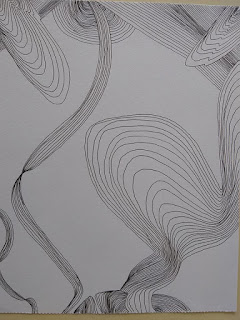These are just the emails from environmental and social justice organizations; most are asking for donations, or my support on a petition, or letter writing campaign.
And of course there are dozens of emails from online stores wanting me to buy, buy, buy.
And emails from other groups - arts and community groups.
And then there are different kinds of emails, ones containing words of analysis. Everyone it seems has a solution to offer, words of hope or despair to put out there.
I am in overload.
As just one example, here are some words from someone at the Broadbent Institute responding to the despairing concern expressed by his 14 year old son after hearing of the IPCC report on climate change:
Positive change is always possible and it’s never too late to set things right....I’ve seen amazing progress on issues as varied as LGBTQ rights and the banning of ozone-destroying chemicals. If we can protect the ozone layer, we can save the climate.[There is] incredible power in people working together; the collective commitment of those around the world who want to see the climate protected, will not be denied. [Adapted from https://www.broadbentinstitute.ca/making_progress_in_tough_times_lessons_from_2018]
But I find these words to be rather empty, especially when compared with the powerful thoughtful analysis of someone like Joanna Macy. Macy, with her background in Buddhism parallelling systems thinking, has developed - along with colleagues - an approach she terms "the work that reconnects". She envisages this work as spiralling through four successive stages: Coming from Gratitude, Honoring our Pain for the World, Seeing with New Eyes, and Going Forth. As she says, these four stages "support one another, and work best when experienced in sequence. They help us experience first hand that we are larger, stronger, deeper, and more creative than we have been brought up to believe."
And, speaking of despair, Macy says: "When we chose as a group to allow and express feelings of grief, outrage, or fear about what is happening to our world, that a sense of liberation emerged, along with increased energy and alertness. Instead of being mired in despair, the opposite occurred. We had tapped into the depths of our caring, and that caring reveals a mutual belonging." [https://greattransition.org/publication/serving-the-earth-serving-one-another]
Because yes, it is grief that is miring me in despair and overload. How hard it is not to succumb. I have so much admiration for Joanna, who has been doing this work for decades, and still finds the zest and energy to go forward.
I highly recommend her work, and both the website The Work that Reconnects, https://workthatreconnects.org/ and Joanna Macy's website https://www.joannamacy.net/.
Since I was in my twenties my writing has circled endlessly around the same subject - the constant, and increasing, degradation that I see eroding the natural environment around us, and the seeming futility of human effort (including my own) to prevent, or turn around, that degradation.
Just in the last few months, I have discovered that art can be an antidote to despair. In art, I can use my writing tools differently, and lose myself to the joy of colour, form and line. It is just pure fun! I don't care if my efforts have any artistic merit; they have no purpose other than the exploration of what happens with line and color.








